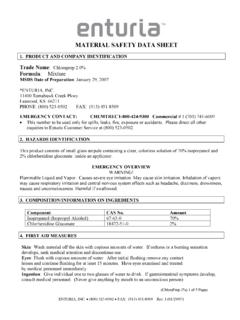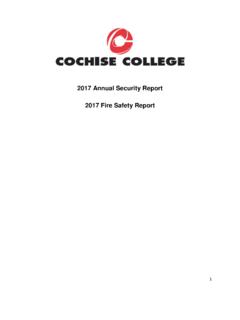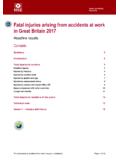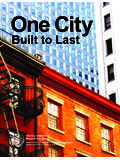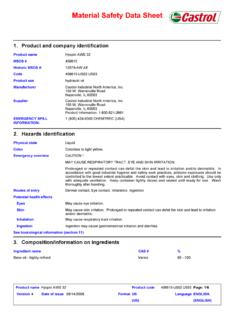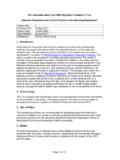Transcription of Supply Chain Risk Report - NOCHILDFORSALE
1 Supply Chain Risk Report Child and forced labour in Canadian consumer productsINTRODUCTIONSUMMARYMETHODOLOGYKE Y FINDINGSSECTOR PROFILESCONCLUSIONS1234 5 6 1 Report SummaryAn estimated 85 million of the world s children suffer in jobs that are dirty, dangerous and degrading. In addition, 21 million people worldwide are forced into labour, coerced, trapped, and intimidated to perform jobs which often have incredible risks attached. million of these forced workers are children. This Report looks at Canada s connection to these issues by cross-referencing recent data on Canadian imports with the Department of Labor s List of Goods Produced by Child Labor or Forced Labor.
2 It tracks the Supply chains of large Canadian companies and industries to identify potential links to the risky products that may be reaching stores in Canada. As part of our research, we asked several fundamental questions: What are Canadian companies doing to reduce the chances that children are toiling in fields, factories, and fishing boats to produce their goods? How do companies know their efforts to prevent child and forced labour are working? What happens when they uncover problems in their Supply chains? And how are they sharing this information with consumers and investors?
3 As this Report reveals, Canadian consumers may be unknowingly supporting child and forced labour through their everyday purchases. When consumers try to learn what, if anything, companies are doing to prevent exploitation, they are too often left in the dark. Even the most proactive shoppers are unable to make informed, ethical purchasing decisions because most companies fail to provide adequate information about what they are doing to keep their Supply chains free of child or forced Findingsn More than half of companies assessed (52 per cent) did not provide any public reporting on their efforts to reduce the risk of child or forced labour in their Supply chains.
4 N Mid-size and private companies are particularly lacking in reporting and Canada s food industry is the least transparent about their Supply chains, even though child labour is most prevalent in the agricultural sector. Sixty per cent of all child labourers toil in jobs like farming and fishing. n A small group of companies leads the way towards comprehensive and transparent reporting: BlackBerry, Gildan Activewear, Hudson s Bay Company (HBC) and Mountain Equipment Co-op (MEC) place a high priority on keeping their Supply chains free from child and forced labour and are taking steps to publically prove RecommendationsConsumers, companies, and governments all have a part to play in eliminating child and forced labour.
5 N Canadian consumers are encouraged to learn to identify goods originating from risky areas and ask key questions of companies importing these goods into Canada. n Canadian companies are urged to commit to measures such as: assessing Supply chains for risky links; implementing strong policies and processes such as supplier codes of conduct; training staff and suppliers to monitor conditions and implement standards, including unannounced, third-party auditing; and introducing formal grievance mechanisms to Report violations. They should also publicly Report on these efforts.
6 N The Canadian government is called upon to create Supply Chain transparency legislation requiring companies to post comprehensive statements outlining steps taken to address child and forced labour in their Supply chains, following jurisdictions such as the and /192 IntroductionThe concepts of a child heading off to hard labour each day, or an adult being held against their will to work off a debt seem fictitious like something out of a Dickens novel. In most people s minds, these practices were abolished hundreds of years ago. But these problems are still very real. Children and adults alike are being exploited to make many of the products we purchase every , media and nongovernmental organizations (NGOs) are bringing attention to the links between these troubling labour practices and the goods we consume.
7 In the six months leading up to the publication of this Report , there have been news reports of children in the Democratic Republic of the Congo mining for metals which end up in our smartphones, child and forced labourers working in deplorable conditions in Thailand s multibillion-dollar seafood industry, and Syrian refugee kids being recruited as garment-factory workers producing clothes in Turkey for major apparel brands. The International Labour Organization (ILO) estimates there are 168 million child labourers globally. More than half of them, 85 million in total, work at jobs that are dirty, dangerous , and degrading.
8 These statistics do not count those with after-school jobs or who help with household chores. Instead, these children are robbed of their childhoods and put directly in harm s , there are 21 million victims of forced labour, including million children, who are coerced, trapped, and intimidated to work, often in extremely dangerous conditions, with no ability to , child and forced labour are among the most egregious labour practices. At the core, they are exploitative and seriously jeopardize people s well-being and waste their potential. Canadians don t want to be part of the problem.
9 Whether consumers or investors, they want to know the goods they buy or invest in haven t been produced by child or forced labour. Yet, currently, it is extremely difficult for most Canadians to know what, if anything, the companies who sell and produce those goods are doing to mitigate these risks in their Supply chains. In this Report , we will refer to risky goods. In doing this, we acknowledge that many companies import goods into Canada from countries with high rates of child and forced labour. The situation comes with three inherent risks . Canadian companies are:1 Placing themselves at risk of contributing to the immense problems of child and forced labour2 Placing consumers at risk of unknowingly supporting child and forced labour through their purchasing decisions3 Placing child and forced labourers at risk by not investigating and controlling what s happening in their own corporate Supply chainsThis Report highlights the extent to which companies importing goods into Canada are associated with the above risks .
10 It provides a snapshot of some of the largest Canadian companies importing risky goods and the extent to which they are publicly communicating their policies and practices to address this issue. The incentive to be transparent with customers is powerful, given the clear desire of Canadians to know more about the labour practices that produce the products they buy. Any Canadian company that can show it is taking real, effective action to address the risk of child and forced labour will be in a better position to win the trust and loyalty of the public, and will be more attractive to investors.
